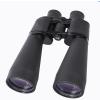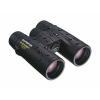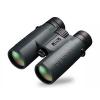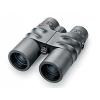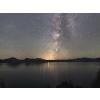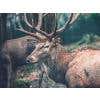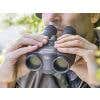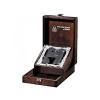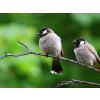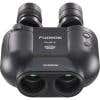Canon Binoculars
What do all the numbers mean? e.g. 10x50, 10x25
The first number is the magnification, the second number is the size of the objective (front) lens in millimetres
As the magnification (first number) gets bigger, the size of what you see through the binoculars gets larger.
The larger the objective lens (the second number), the brighter the image seen through the binoculars. Although this also makes the binoculars heavier and larger.
Roof or Porro Prism?
There are many different constructions of binoculars, but the majority fall into two categories; Roof or Porro prism.
Porro prism binoculars are the most common design of binocular. using two reflective prisms, the eyepiece is offset to the objective lens. This design is sharp and easier to produce than Roof prism binoculars, but this is at the expense of weight and size.
Roof prisms use sandwiched transparent prisms that allow a compact, lightweight and rugged, “straight-through” design from the eyepiece to objective lens. This is a more complicated process, which makes them generally more expensive than the equivalent magnification/quality of Porro prism binoculars.
Binocular types, features and sizes vary greatly based on their purpose, ranging from sports binoculars, waterproof binoculars, tough binoculars, travel binoculars, hunting binoculars, children's binoculars, to tripod-mounted binoculars ideal for those interested in astronomy. Ted's stock a huge range of binoculars for every situation.
 Click HERE to read the full article.
Click HERE to read the full article.
Invest in high-quality binoculars
Binoculars can make important events even more spectacular and more enjoyable by providing a clearer, more detailed and more magnified view of your surroundings. Stuck in the nosebleed seats? Binoculars can help. Going hunting? Binoculars can help with that. Bird watching? Binoculars have got you covered.
The list of use-cases for binoculars is endless, with concerts, sporting events and of course, travelling, getting the most benefits. If you want to enhance your enjoyment and get a better view than the naked eye can achieve, take a look at our vast range of binoculars right now and discover the best binoculars for you.
Understanding the technical side of Binoculars
Before we help you find the best binoculars, you need to understand how they work. While most of us are familiar with using binoculars, not everyone knows what makes one pair better than another.
Along the side of every pair of binoculars is a pair of numbers separated by an X.
- The first number refers to the magnification of the binoculars, or how much bigger they can make the subject. The higher the number, the greater the magnification.
- The second number is the physical size of the front lens, or the objective lens, in millimetres. Larger objective lenses deliver a brighter image but are typically larger and much heavier.
Most binoculars are constructed using one of two popular designs: Porro Prism and Roof Prism.
- Porro Prism binoculars are easier to produce while still offering a sharp and clear view. The disadvantage of Porro Prism binoculars is their generally bulkier size.
- Roof Prism binoculars utilise a “straight through” design which is noticeably more compact and rugged. This design is trickier to produce, making these binoculars more expensive.
To find out more about the ins and outs of binoculars, check out our handy Binocular Buying Guide.
Finding the right Bino’s for any occasion
If you’re still unsure how to choose binoculars, then be sure to answer these five questions before buying a pair of binoculars. But if that’s still not enough, head into your local Ted’s Camera store to get expert advice from one of our friendly staff members.
We have sports binoculars, waterproof binoculars, rugged binoculars, travel binoculars, hunting binoculars, children's binoculars, and even tripod-mounted binoculars for those interested in astronomy and stargazing. We also have a list of the best binoculars if you’re after the very best.
At Ted’s Cameras, you’re sure to find a pair of binoculars that makes the world come alive when you hold them up to your eye. Because, after all, beauty is in the eye of the beholder.





